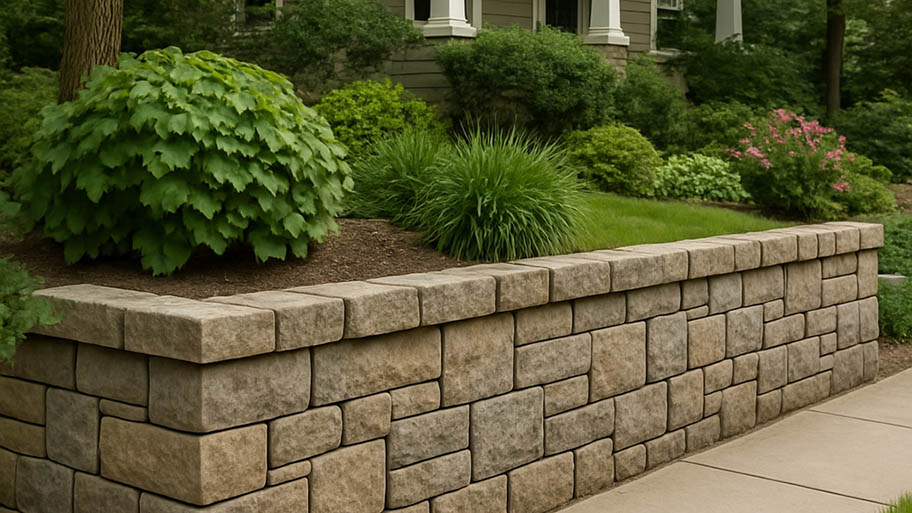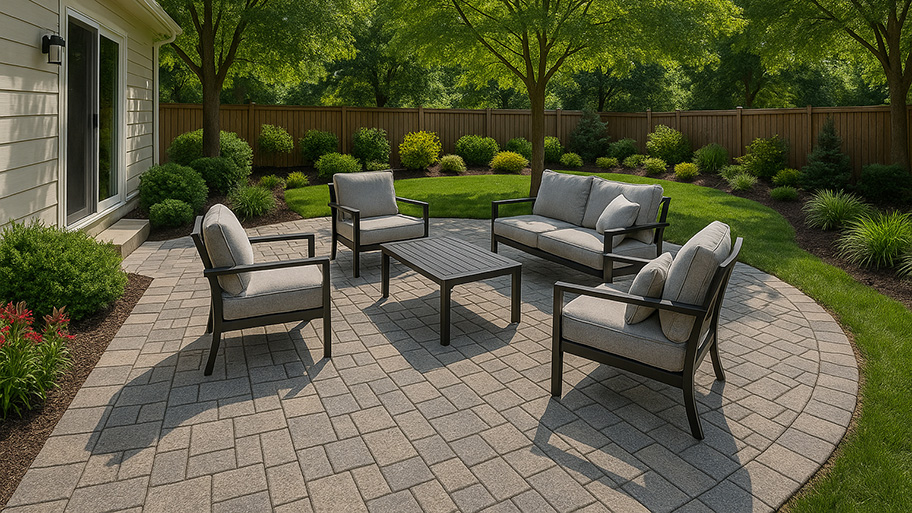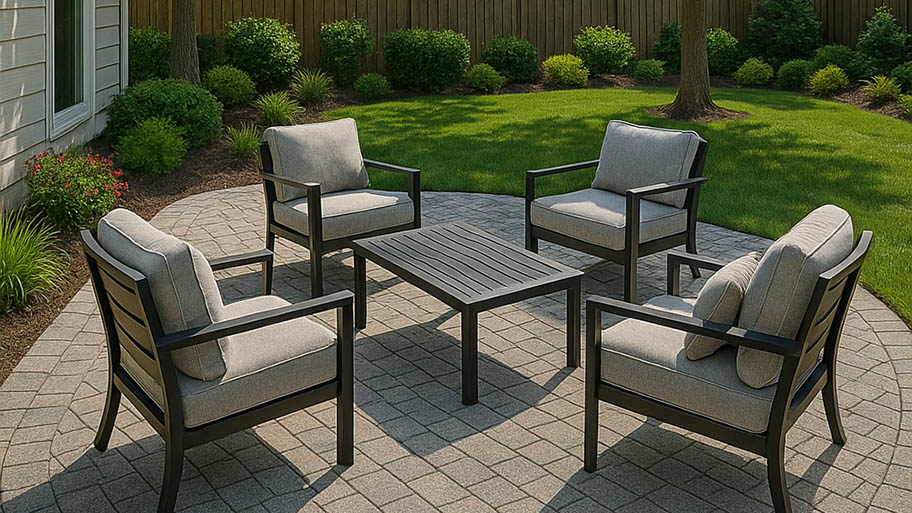
Kick erosion to the curb with an eye-catching retaining wall. Retaining wall costs vary based on the material, but this guide will help you budget.
Interlocking pavers might be the perfect fit for your landscape


Interlocking pavers can withstand up to 12,000 pounds per square inch.
Interlocking pavers are an excellent solution for driveways, patios, and other outdoor areas.
They are easy to install.
You can purchase pavers in concrete, brick, or natural stone.
For a new patio, walkway, driveway, or other outdoor areas, interlocking pavers are hard to beat. They are extremely durable—withstanding up to 12,000 psi (pounds per square inch)—easy to maintain, and come in a variety of colors, shapes, and styles to suit any aesthetic preferences. Better yet, interlocking pavers fit together easily like puzzle pieces, making them DIY friendly. Read on to learn everything you need to know about interlocking pavers and how to get the most out of them to boost your curb appeal.
Interlocking pavers are made from natural or manufactured stone and are used to design a solid surface for many outdoor areas, such as patios, driveways, or walkways. They connect together like puzzle pieces, instead of being poured into an area like concrete, and typically sit on top of a base layer of sand, gravel, or concrete for added stability.
Unlike other outdoor flooring options, such as asphalt or concrete, interlocking pavers are easy to repair, as you can simply remove one paver and swap it out for a new one. Typically, when concrete becomes damaged, a professional must cut out the damaged area with a concrete-cutting saw and pour new concrete, a lengthy and costly process.
Interlocking pavers are great for outdoor surfaces, including patios, driveways, and walkways.
Homeowners often use interlocking pavers for patios because they are easy to install and allow for intricate, customizable designs. Interlocking pavers are also pretty easy to maintain and are ideal for a wide range of weather. If your patio is supposed to be a place where you can relax and unwind, choosing a low-maintenance, low-stress option like an interlocking paver just makes sense.
Interlocking pavers are highly durable and long-lasting. In fact, with the proper maintenance, interlocking pavers can last 50 years or more. That makes them a great solution for your driveway. The cost to install a concrete driveway might be slightly cheaper, but you’ll get a much longer lifespan out of a paver driveway.
Interlocking pavers are a great choice for a walkway through your yard or garden. You can choose from a variety of colors and materials to customize the space to your liking. You’ll just need to keep up with weeding the pavers; otherwise, they’re virtually maintenance-free.
There are three main types of interlocking pavers.

The least expensive of the three, concrete pavers come in a wide range of shapes and colors. They are very durable, and therefore suitable for driveways and walkways, but they need resealing to retain their color. Other than that, maintenance is simple.
Natural stone pavers are made from elegant granite, limestone, flagstone, cobblestone, travertine, or fieldstone, and are pricier than other options. Because they aren’t dyed like brick or concrete pavers, the color of natural stone doesn’t fade, but they aren’t as dense or durable as the other materials, so they aren’t suited for driveways.
Brick pavers are typically rectangular and made from baked red clay. They can be laid in various directions for different patterns, are very strong, and are suitable for driveways and walkways. Over time, they can form efflorescence, a chalky substance that comes from the salt inside the brick; pressure wash them regularly to keep efflorescence at bay.
Even though interlocking pavers connect like puzzle pieces, they don’t fit fully flush against one another in the same way. Instead, a small gap lives between each paver in which a joint material, such as sand, is placed. The space and sand create friction in the paver joints, which helps disperse weight over a larger area, allowing pavers to withstand heavy loads like vehicles. When you walk on one or two pavers, you distribute your weight over six to seven pavers.
To keep your new paver patio or walkway looking new, wash it with water regularly and sweep it to move dust, leaves, and other debris away. Removing stains will vary based on the type of material you installed, but typically a gentle cleaning solution and pressure washing do the trick.
Interlocking pavers cost between $8 and $25 per square foot, though costs for natural slate or stone pavers can go as high as $50 per square foot, especially if it’s customized. Concrete stone pavers are the most affordable to install; they cost between $8 and $15 per square foot. For the most accurate quote, contact a paver installation contractor near you.
It is possible to install interlocking pavers yourself, but the job can be time-consuming, challenging, and grueling. You’ll need at least a few days—and all the proper tools—to do it yourself. If you think you’re up for the challenge, here’s how to install interlocking pavers.
That said, correct installation is crucial to the longevity of your paver surface—and if you want an intricate design, that’s all the more reason to hire a professional. We highly recommend working with a professional paver installation company near you for the best final result.
From average costs to expert advice, get all the answers you need to get your job done.

Kick erosion to the curb with an eye-catching retaining wall. Retaining wall costs vary based on the material, but this guide will help you budget.

Thinking about installing concrete or brick pavers for a walkway or patio? Learn the cost of interlocking pavers in this informational guide.

Looking to elevate your backyard aesthetic with a patio? Use this paver patio cost guide to help you estimate your total project cost before you get started.

Adding certain types of hardscape features can add value to your home. These are the projects that will get you the biggest return on your investment.

Wondering how to clean your patio pavers and restore their freshly installed beauty? Cleaning your brick pavers involves a series of steps and optional professional assistance. We’ve got your simple go-to process right here.

Reviewing a contractor’s quote is essential when remodeling. By following these five efficient steps, learn how to tell a contractor their price is too high.